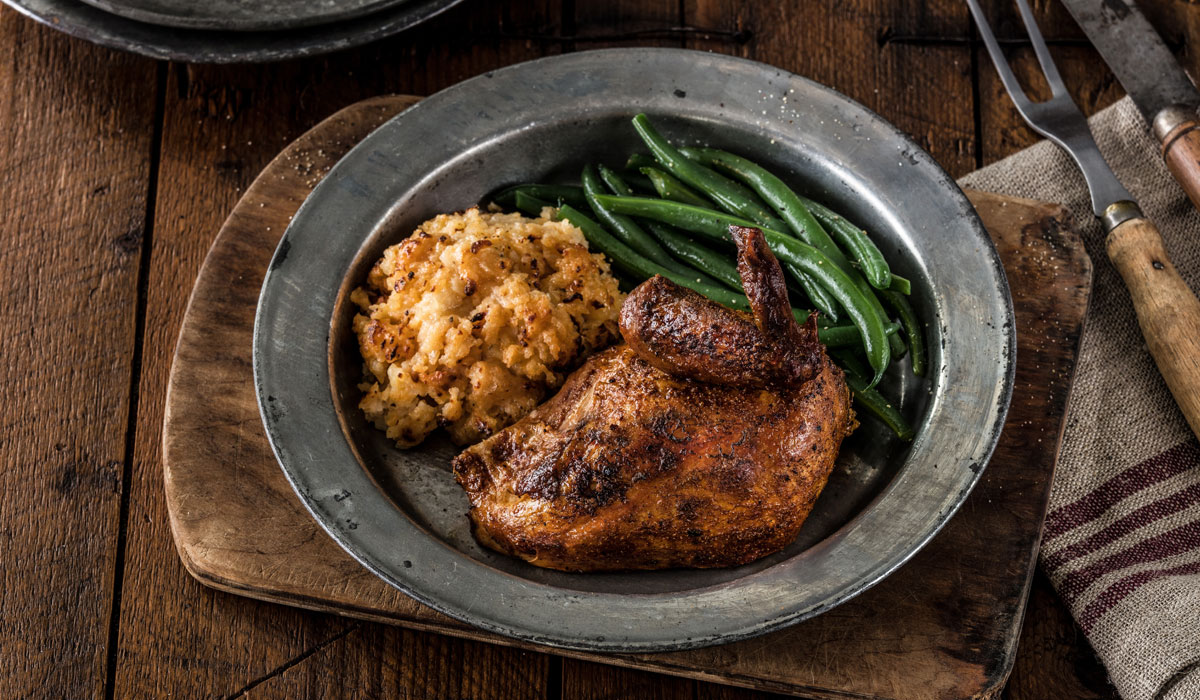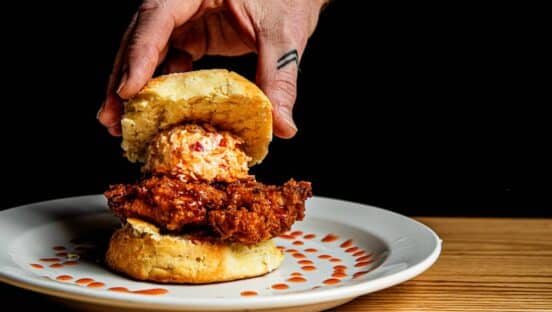Sam Nazarian has been in the food and beverage industry for almost 20 years as the leader of lifestyle hospitality company sbe. And within those two decades, his company always tried to understand trends and what might be around the corner.
Four years ago, he noticed consumers were ordering off-premises at a velocity outpacing visits to restaurants—it was undeniable, even at that point. Disruption of the industry centered around getting food to guests quickly, and with the onset of third-party delivery services in 2016, 2017, 2018, and 2019, the shift only gained more fuel.
And really, it was the disruption Nazarian and his team expected. He compared it to Airbnb and Expedia shaking up hospitality, and Amazon changing the scope of retail. Now, it was the food industry’s turn.
In response, sbe started doubling down on a separate company that would focus specifically around proprietary brands that could easily translate into multiple distribution points for delivery, such as fast casuals, food halls, and craft services. When the group dug deep in 2019, it formulated Creating Culinary Communities, or C3.
“Really, the intent of C3 was then and continues to be a complete solution of an ecosystem of brands that work together to unlock the value of real estate in whatever capacity, whether they’re ghost kitchens, food halls, kitchens of hotels, or kitchens of restaurants that have gotten dark, and enable that to our own technology to be able to deliver that food in a very, very efficient and value proposition manner,” Nazarian says.
READ MORE: C3 Acquires Speciality’s Café & Bakery Stores to Launch EllaMia Brand
For Nazarian, the two most important matters at that time were finding scalable strategic partners. So C3 turned to Simon Properties, the largest landlord in the country, and Accor Hotels, which boasts 5,000 units worldwide.
Nazarian says prior to the COVID-19 pandemic, C3 was fortunate to have the infrastructure and digital capability to be successful in the space, and the technology to talk to consumers directly. The company was also able to execute a big launch in late 2019 and early 2020 because of a strong portfolio of locations it already owned, including hotels, restaurants, nightclubs, and office buildings.
C3 currently has more than 200 digital kitchens, and 75 more are coming through Q1. The company’s eight virtual brands are Umami Burger, Krispy Rice, Sam’s Crispy Chicken, Plant Nation, EllaMia, In a Bun, The Other Side, and La Gente Tacos. Next year, seven more will be added.
When it comes to developing differentiated brands, Nazarian says it’s not too dissimilar from what he’s done with sbe over the past several years. Sometimes they look at a brand around a culinary partner or great chef. It also requires the examination of market trends. In any case, Nazarian says sbe knows what people enjoy eating because it’s been doing it for years. The trickiest part is building the brand in a way that can survive the quick-service environment.
This involves not only the logo, look, and feel, but also the online presence and social influence. C3 must answer whether the food travels well and if it synergizes with other products because ingredients are shared when multiple brands run under one roof. C3 also looks at the training component to ensure brands are easy to execute whether a kitchen opens in Portland, Oregon, Nashville, Tennessee, or Oakland, California. Employees are cross-trained to cook each brand, which increases efficiency and reduces labor costs.

“When people ask what is C3, is it a ghost kitchen company, I say, ‘No, it’s not,’” Nazarian says. “We do have ghost kitchens. We do have food halls. But we’re a brand company, and we’re a technology company to get you the food in the manner you want it. And so, it’s definitely a big, foundational part of the way we look at the business, which is the quality of the brand and how it speaks to millennials, how it speaks to people that are for the first time—because they’re a little bit older—ordering online.”
Nazarian says C3 is in 45 of the biggest college towns in the U.S. It’s also partnering with REEF Technologies, a company with a mission to turn parking lots into “neighborhood hubs.” Additionally, C3 will operate up to six food halls by the end of Q1. Two hundred to 300 standalone C3 branded restaurants are expected to open by the end of 2023. So when the company realizes its full potential, it will cover delivery, in-store dining, catering, and takeout.
The company wants to be in malls and on main streets around America. It’s taking a comprehensive approach by addressing tier two and tier three cities as much as it targets tier one areas.
“The way I look at it is obviously density is important. So we are looking at areas that have a demand for daytime, nighttime, weekend, weekday. What really makes us unique is that we’re able to put up to 15 brands into a kitchen,” Nazarian says. “We own all of our own brands. We create them in-house and with strategic culinary partners like some of our James Beard and Michelin chefs. We’re able to really unlock the value, whether it’s a vessel with REEF or whether it’s a kitchen in the hotel that was shuttered, whether it’s restaurants that we own, whether it’s restaurant companies that were buying and have acquired during COVID or post-COVID.”
Granted, because of how some buildings are designed, all locations won’t have the necessary infrastructure to hold each and every brand. But the goal is to have as many brands as possible.
That notion led C3 to CitizensGo, a virtual food hall based in Manhattan West that houses all the brands in one digital space. The concept went into beta test last month and is scheduled to debut in 2021. The first-party platform, created in partnership with Lunchbox, circumvents delivery apps and allows C3 to engage with customers. Users have the ability to pick and choose items from each brand and place them in one shopping cart for delivery.
[float_image image=”https://www.qsrmagazine.com/wp-content/uploads/2020/10/Freddy.jpg” width=”50″ link=”” caption=”” alt=”Freddy’s Frozen Custard & Steakburgers” align=”left” /]
The veto vote is “virtually” eliminated.
“You’re able to have a lot of different experiences through one purchase, one delivery fee,” Nazarian says. “More importantly, all these brands and the food you’ve ordered, all coming at the same time through one delivery driver. And I think it’s a real game changer as opposed to families or individuals having to order multiple.”
As business has grown, so has the team. Nazarian hired 21 veterans to help lead C3, including veterans from Starbucks, Shake Shack, Red Bull, and True Food Kitchen. The company also plans to rehire at least 1,000 foodservice workers.
Nazarian and C3 are forging ahead knowing that off-premises won’t be as elevated as it is now once COVID ceases and more dining rooms return. The company is banking on that, actually.
C3 wants college students to return to campuses and for parents to return to office buildings. It wants foot traffic to increase at airports and hospitals. Each of those are part of the overall C3 ecosystem.
Nazarian says the future of the food industry is analogous to what Netflix did to movies. People will still go to movie theaters every now and then to see a film in 3D similar to how consumers will still visit restaurants for the experience. But the age of convenience has crossed a point of no return.
“We’re actually hoping, even though the digital kitchen piece of our business is really booming right now, we’re also super excited the world’s coming back because that is the long-term view we have. That when you go to the office, or when you go to school, or whatever you do during the day, you’ll be coming to our food halls, you’ll be ordering from our units in office buildings and campuses all around the country,” Nazarian says. “And when you go back home, you use those loyalty points through our app.”
“… But the fact is that the way in which food gets to you, and how quickly it gets to you, it’s definitely convenience that people are not going backwards on,” he adds.








